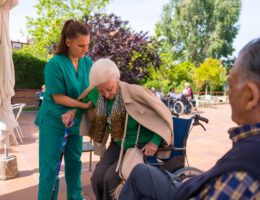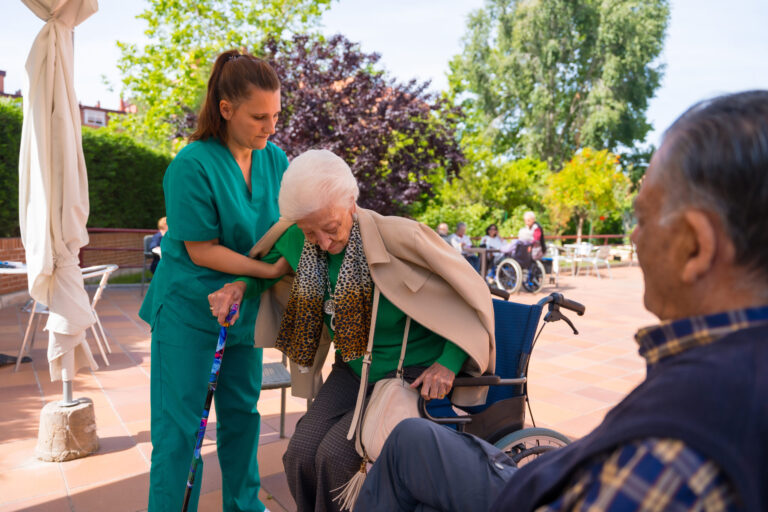How To Help Your Loved One Adjust to Assisted Living
Moving a loved one into an assisted living facility marks a significant change in life, both for them and for you. It’s a decision often accompanied by a mix of emotions, ranging from relief to guilt, and from hope to uncertainty. As someone who cares deeply, your support can make a world of difference during this transition. In this article, we’ll explore ways to help your loved one adjust to their new environment and maintain their quality of life.
Strategies for Personalizing the New Living Space

Creating a familiar and comfortable environment within a living space can significantly impact your loved one’s emotional well-being. Begin by personalizing their new residence with cherished items from home—family photos, favorite books, or a special blanket can create a sense of comfort and continuity.
Consider the layout of the space and how to make it safe and accessible while still feeling cozy. Introducing a favorite piece of furniture or a fake pot plant to brighten up the room can add a touch of personality and life, making the environment more inviting.
Respecting your loved one’s taste and preferences when decorating is key. This not only helps in the emotional adjustment but also fosters autonomy by allowing them to make decisions about their living space. Engage them in the process to make it a collaborative effort that acknowledges their individuality.
Maintaining Regular Visits and Communication
Maintaining a consistent presence is a cornerstone of helping your loved one adjust to assisted living facilities. Regular visits are an opportunity to check in on their well-being, provide companionship, and keep them connected to family life. These interactions are invaluable, giving them something to look forward to and maintaining strong family ties.
Thanks to technology, communication can extend beyond face-to-face visits. Video calls, social media, or even simple text messages can keep the lines of communication open. Such frequent contact can alleviate feelings of loneliness and promote a sense of inclusion in the daily lives of family and friends.
When visiting, engage in activities both within and outside the facility. Sharing meals, taking walks, or attending a local event together can diversify their experiences and help them maintain an active social life. This also provides a comfortable environment for open conversations about their new lifestyle.
Encouraging Social Interaction and Community Involvement
Assisted living facilities often provide a rich tapestry of social activities and community events to help residents stay engaged and connected. Encouraging your loved one to participate can greatly enhance their sense of belonging and overall happiness. Initially, they may feel hesitant; your gentle encouragement can play a significant role in taking that first step.
Guide them in identifying groups or activities that align with their interests. Whether it’s a book club, gardening, or arts and crafts, engaging in hobbies and shared interests can foster new friendships and provide a sense of purpose. These connections are essential to creating a supportive community around them.
Furthermore, some assisted living communities, like the one found through assisted living facility pages, may offer volunteer opportunities or community service projects. These allow residents to contribute to the greater good and foster a profound sense of achievement and self-worth.
Navigating Financial and Healthcare Planning Together

The logistics of moving to assisted living facilities can be daunting, particularly when it comes to finances and healthcare. Work together with your loved one to understand the costs involved and explore options for managing them. Transparent conversations about budgeting and payment plans can alleviate stress and empower them to take control of their financial situation.
Equally important is the healthcare aspect. Be proactive in setting up meetings with the healthcare staff at the facility to discuss your loved one’s medical needs and care plans. Staying informed and involved in these discussions ensures that they receive personalized care that aligns with their health requirements.
Advance directives and end-of-life planning are topics that should also be discussed respectfully and sensitively. Assure your loved one that you are there to honor their wishes and see that their healthcare preferences are met. This level of planning can provide peace of mind for everyone involved.
Altogether, helping your loved one adjust to assisted living is a multifaceted process that requires patience, understanding, and proactive support. By personalizing their living space, encouraging their social life, maintaining regular communication, and navigating financial and healthcare plans, you can play a pivotal role in their comfort and happiness in their new home. Overall, it’s about ensuring a smooth transition filled with respect, love, and a supportive hand to hold every step of the way.




